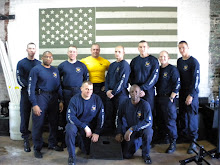CF 864 Today's schedule 5:15a.m./9:00a.m.
Day 59 of the "100 burpee challenge"
Warm-up (on whiteboard)
Double alternating tabata:
Deadlifts (225/135)
Box Jumps (24/20)
You, my brothers, were called to be free. But do not use your freedom to indulge the sinful nature; rather, serve one another in love. The entire law is summed up in a single command: "Love your neighbor as yourself." If you keep on biting and devouring each other, watch out or you will be destroyed by each other.
Galatians 5:13
Make no little plans; they have no magic to stir men's blood...Make big plans, aim high in hope and work.
- Daniel H. Burnham, 1846-1912
Core Strength Training - Not Just About Your Abs
Core strength training may be a relatively new, buzz term in the fitness industry but coaches and athletes have understood its value for many years.
The core region consists of far more than just the abdominal muscles. In fact core strength training aims to target all the muscles groups that stabilize the spine and pelvis.
It's these muscle groups that are critical for the transfer of energy from large to small body parts during many sporting activities.
Core Strength Training For Athletic Performance
The muscles of the trunk and torso act to stabilize the spine, pelvis and shoulder girdle. From this solid, balanced base the limbs can be moved powerfully and under control. In fact before rapid movements of the extremities can take place, the central nervous system stabilizes the spine in anticipation (1). The rate at which the core muscles stabilize the spine may have a direct effect on the power of limb movement (2).
Core strength training differs from many traditional weight training routines by working both the lower back and abdominals in unison. The same is true for the upper and lower body. All athletic movements incorporate the core in some way. Very few muscle groups are isolated. Instead the whole body works as a unit and core strength training endeavours to replicate this.
What are the benefits of core strength training to the athlete?
1.Greater efficiency of movement
2.Improved body control and balance
3.Increased power output from both the core musculature and peripheral muscles such as the shoulders, arms and legs
4.Reduced risk of injury (the core muscles act as shock absorbers for jumps and rebounds etc.)
5.Improved balance and stability
6.Improved athletic performance!
Core Strength Training for Reducing Back Problems
Weak or poorly controlled core muscles have been associated with low back pain (3,4). The back muscles are responsible for movements such as extension and flexion of the spine and rotation of the trunk.
Excessive or uneven shock on the spine may lead to back problems. This may be exaggerated because weak core muscles lead to improper positioning or a forward tilt. In many exercises that use the back muscles, the abdominal muscles contract isometrically stabilizing the body.
The stronger and more correctly balanced the core muscles are, the less the uneven strain on the spine.
There were a lot of great efforts Monday! Eva was tough...well, you know that already if you were there on Monday. Just proof that you can do a lot more than you thought you were capable of and more than you give yourself credit for. I did not hear any whining - Oooh-Rah! Maybe you saved it until you got in the car to leave (LOL) and that's the place for it. Are you ready for more? One more WOD toward being fit. Real fitness is earned! 3-2-1-Go!
BE STRONG!
Jay and Janice
Subscribe to:
Post Comments (Atom)





















No comments:
Post a Comment